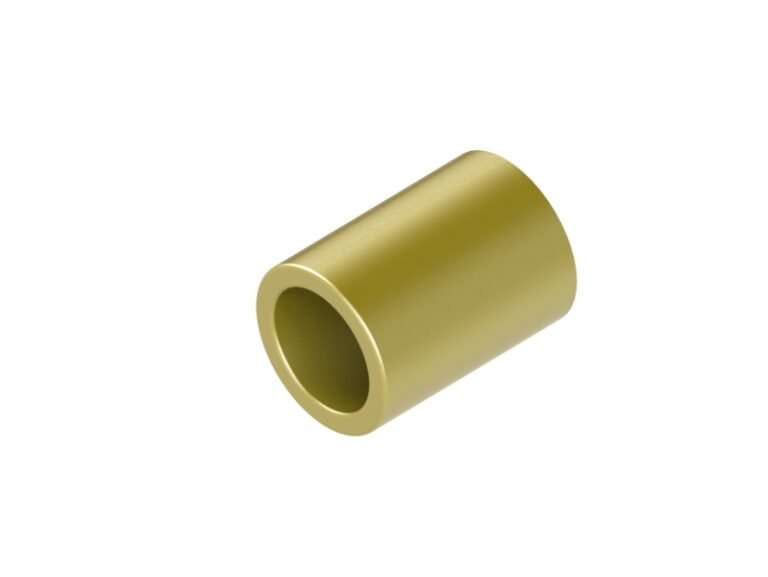In the quest for high performance, reduced maintenance, and long-term durability, modern automotive engineering has increasingly turned to solid lubricant bushings. These components may not be as visible as engines or braking systems, but their role in reducing friction and wear in high-load, high-motion areas is essential.
So what exactly is an automobile solid lubricant bushing — and why is it becoming a standard in today’s vehicle systems?
What Is a Solid Lubricant Bushing?
An automobile solid lubricant bushing is a self-lubricating bearing designed to reduce friction between moving parts in mechanical systems — without the need for external oil or grease. These bushings incorporate solid lubricants such as graphite, MoS₂ (molybdenum disulfide), or PTFE, which are embedded within the metal body or inserted as discrete plugs.
Unlike conventional bushings, which depend on continuous lubrication and regular maintenance, solid lubricant bushings provide maintenance-free performance over long cycles. This makes them ideal for use in automotive suspensions, steering systems, brake components, and transmission linkages — all of which require high reliability and resistance to harsh conditions.
Why They Matter in Automotive Applications
Automobiles are exposed to varying temperatures, vibrations, road contaminants, and high-frequency motion. In such conditions, traditional lubricants can degrade, evaporate, or attract dust and debris — leading to premature wear.
Solid lubricant bushings, on the other hand, offer:
- Long-term lubrication without oil
- Resistance to dust, corrosion, and high temperature
- Quiet, smooth movement
- Extended service life
As a result, many OEMs now favor these components for critical points in chassis systems and high-precision assemblies where accessibility is limited and performance is non-negotiable.
Common Standards for Solid Lubricant Bushings
Several industry standards define the performance and geometry of solid lubricant bushings used in automotive and industrial applications. Notable examples include:
- DIN 9834 Oilless Guide Bushes: Popular in automotive die sets and stamping tools, DIN 9834 bushings are made from high-strength bronze alloys and embedded with solid lubricant plugs, offering excellent wear resistance and zero-maintenance operation.
- JIS G-6 Solid Lubricant Bearings: Frequently used in Japanese automotive tooling systems, this standard supports high-speed operations and provides good alignment precision under dynamic loads.
- ISO 4379 Flanged Bushings: A global standard applied in both automotive and industrial sectors, ISO 4379 bushings feature self-lubricating surfaces and flanged designs for axial positioning and shock absorption.
These standards provide design flexibility, interchangeability, and international compatibility, helping engineers implement reliable solutions across different vehicle platforms and manufacturing setups.
Conclusion: Small Components, Big Engineering Value
Solid lubricant bushings are the unsung heroes of automotive design. They quietly extend the lifespan of vehicle components, eliminate the need for constant lubrication, and reduce both cost and complexity over time.
From DIN 9834 to ISO and JIS standards, these bushings have become essential in achieving the goals of modern mobility — whether it’s electric vehicles, performance cars, or heavy-duty trucks. For engineers and procurement professionals alike, choosing the right solid lubricant bushing is not just a detail — it’s a decision that affects the entire system’s reliability.



